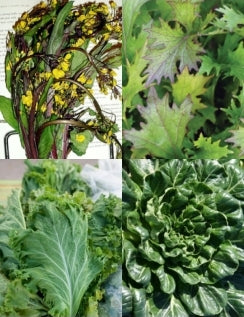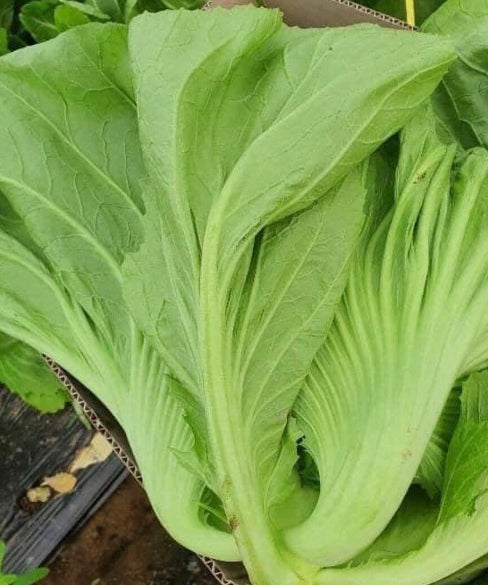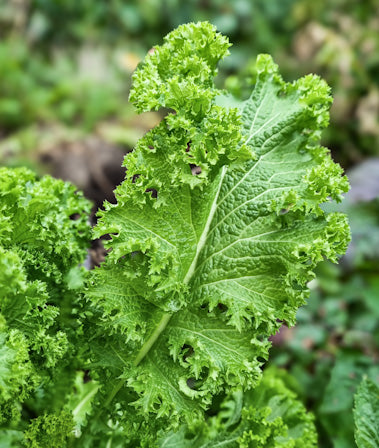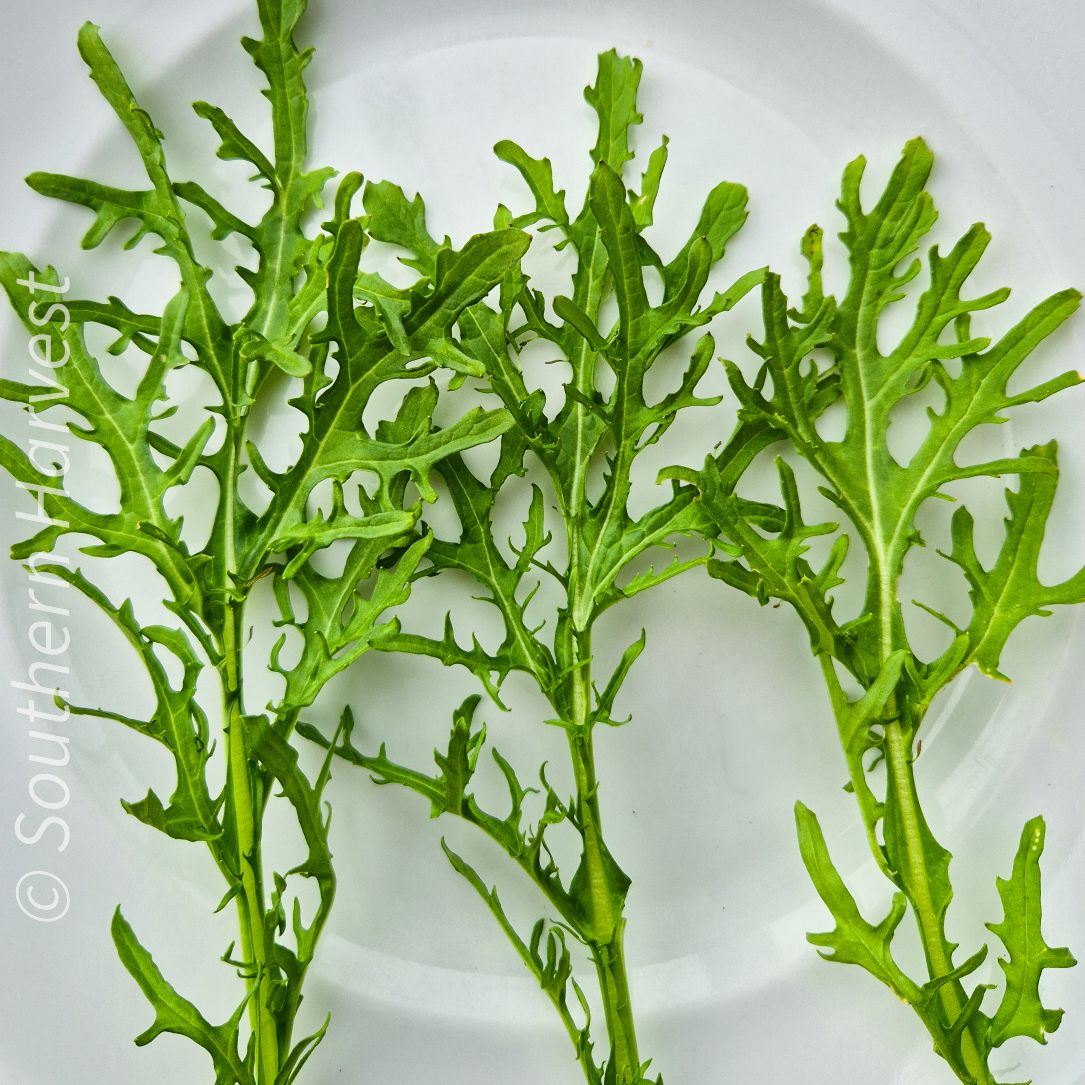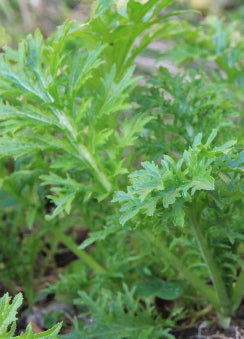How to Grow Mustard

The essential guide to growing mustard from seed; with notes on germination, cultivation, harvest and even kitchen uses.
This guide is predominately about mustard greens/leaf to be used fresh in the kitchen.
Mustard Types – Flavour & Kitchen Uses:
- Leaf / salad mustards – tender, peppery to wasabi-hot; pick baby leaves for mixed salads, larger leaves for stir-fries, soups and sauté greens.
- Seed mustards (white/yellow, brown, oriental) – grown on for pods that ripen to spicy seeds; use whole in pickles, toast for curries or grind for homemade condiments.
- Green-manure / bio-fumigant mustards – fast biomass and high glucosinolate roots; dig in at early bloom to boost organic matter and suppress nematodes and soil-borne disease.
- Sprouting/microgreen mustards – 5-day shoots pack a sharp punch; garnish sandwiches, sushi and noodle dishes.
Seeds per Gram: ≈ 400 - 600 seeds
Optimal Germination Temperature: 12 – 20 °C (sprouts in 7 – 14 days)
Feed Requirements:
- Moderate-high.
- Blend plenty of compost or well-rotted manure into the bed and add a nitrogen-rich organic fertiliser (about 60 g m⁻²) before sowing for rapid, mild growth.
Growing Notes:
Climate & Timing
- Temperate / cool zones: sow late summer-autumn for winter harvest; a second sowing late winter to early spring provides the first leafy greens before lettuce.
- Sub-tropics: autumn-winter sowing only; heat triggers bolting and strong bitterness.
- Mustards tolerate light frosts and become sweeter; prolonged heat (>28 °C) causes bolting.
Sowing & Spacing
- Direct-sow 3-5 mm deep, 30 – 40 cm between plants, rows 40 – 60 cm apart.
- Thin seedlings at two true-leaf stage to give strong plants space: 30 cm in spring, 35–40 cm in autumn.
- For continuous supply, broadcast a row every 3 weeks or interplant between slower crops.
Water & Soil
- Shallow-rooted; keep the top 5 cm of soil moist with regular deep watering—dry stress makes leaves tough and hot.
- Mulch to conserve moisture and suppress weeds.
Care
- Feed with liquid seaweed or fish emulsion fortnightly if growth slows.
- Net seedlings against cabbage white butterflies.
- For seed production reduce watering once plants flower; avoid leaf harvest.
Common Problems:
- Slugs & snails: most damage on young plants in early spring—use pellets or traps.
- Aphids: spray with strong water jet or insecticidal soap; encourage ladybirds.
- Powdery mildew: improve airflow, water soil not foliage, remove infected leaves.
Harvesting:
-
Leaves:
- Ready 30 – 60 days from sowing.
- Pick outer leaves as needed, or cut whole plants 5 cm above soil for a single harvest; new shoots resprout once in cool weather.
- Eat promptly for best flavour; store washed leaves in a perforated bag in the fridge for up to 5 days.
-
Flower buds:
- Nip off unopened yellow buds (like mini broccolini) just before bolting—they’re a delicacy steamed or tossed in noodles.
-
Seeds:
- When pods turn pale brown and rattle, pull whole stems, dry in a paper bag a week, then thresh and winnow.
- Keep seeds cool and dry for cooking or next season’s sowing (viable 3–4 years).
-
Green manure:
- Slash and dig in at first bloom (about 6 weeks) while stems are still soft; water well to speed decomposition before the next crop.
Sow fresh seed into rich, moist soil, keep the water up, and mustard will reward you with quick, nutrient-packed greens, zesty seeds, or a soil-healing cover—whichever flavour of mustard suits your patch.
Sowing Periods
| J | F | M | A | M | J | J | A | S | O | N | D | |
|---|---|---|---|---|---|---|---|---|---|---|---|---|
| Cool | ||||||||||||
| Temperate | ||||||||||||
| Sub-Tropical/Tropical |
Filters
9 products
'Asian Cool' Greens Mix
Sale price$3.75
CHOI SUM (Choi-San)
Sale price$3.75
GAI CHOI
Sale price$3.75
HON TSAI TAI (Purple Choy Sum)
Sale price$3.75
Mibuna
Sale price$3.75
MUSTARD GREEN ‘Green wave’
Sale price$3.75
Mustard Green ‘Lime Streaks’
Sale price$3.75
MUSTARD GREEN ‘Red Giant’
Sale price$3.75
MUSTARD GREEN ‘Wasabi-na’
Sale price$3.75

